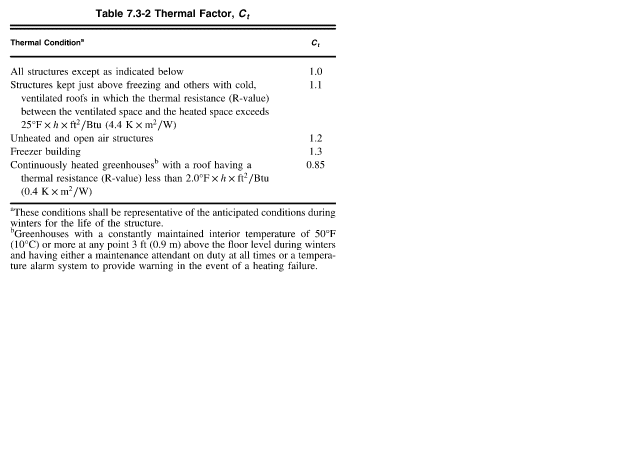I am designing a group of buildings for a summer campgrounds in a high (~60 PSF) snow load area. The buildings will be unoccupied and winterized/unheated during the winter.
Buildings are risk category II
My thoughts regarding snow loads
1. Design snow load using a Ct of 1.0, Risk Category II
2. Use a Ct for unheated structures since the buildings will be unheated in the winter.
My reasoning to use Ct of 1.0 is that when the building is unheated it'll be unoccupied and arguably Risk Cat I. If the buildings end up getting used during the winter (not unoccupied) then they'll be heated.
Curious to hear others thoughts.
Buildings are risk category II
My thoughts regarding snow loads
1. Design snow load using a Ct of 1.0, Risk Category II
2. Use a Ct for unheated structures since the buildings will be unheated in the winter.
My reasoning to use Ct of 1.0 is that when the building is unheated it'll be unoccupied and arguably Risk Cat I. If the buildings end up getting used during the winter (not unoccupied) then they'll be heated.
Curious to hear others thoughts.

